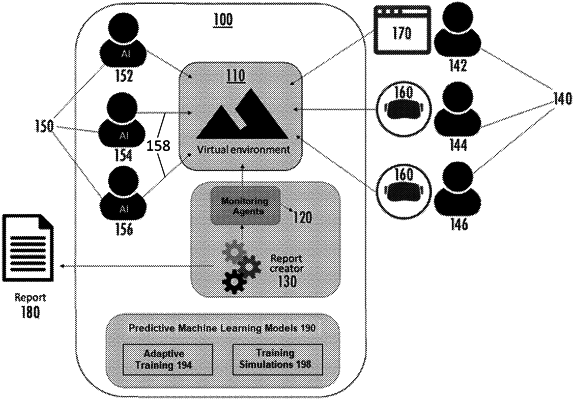| CPC G06F 3/012 (2013.01) [G02B 27/017 (2013.01); G06F 3/017 (2013.01); G06F 11/3003 (2013.01); G06N 20/00 (2019.01); G06T 19/006 (2013.01)] | 20 Claims |

|
1. A method comprising:
executing, by a server, one or more software agents configured to collect data generated when a user interacts with a three dimensional (3D) virtual environment to perform a task within the virtual environment on a client device,
wherein during performance of the task, the one or more software agents measure one or more skills for the task, and wherein the 3D virtual environment includes visual and/or auditory images representing a plurality of interactive 3D virtual objects;
generating, by the server, one or more virtual entities during the performance of the task within the 3D virtual environment;
executing, by the server, a predictive machine learning model to configure the one or more virtual entities within the 3D virtual environment based upon the data generated when the user interacts with the 3D virtual environment to perform the task and the one or more skills for the task,
wherein the one or more virtual entities generate one or more virtual entity outputs based upon the data generated when the user interacts with at least one of the plurality of interactive 3D virtual objects of the 3D virtual environment to perform the task;
generating, by the server for display by the client device, the 3D virtual environment and the one or more virtual entities configured for interaction with the user;
receiving, by the server, the data collected by the one or more software agents during the performance of the task within the virtual environment;
determining, by the server, one or more additional skills for performance of the task, wherein the one or more virtual entity outputs are representative of the one or more additional skills for performance of the task;
generating, by the server for display by the client device, a user interface to indicate a measurement of each of the one or more skills and the one or more additional skills during the performance of the task in the virtual environment; and
training, by the server, the predictive machine learning model using the measurement of each of the one or more skills and the one or more additional skills.
|